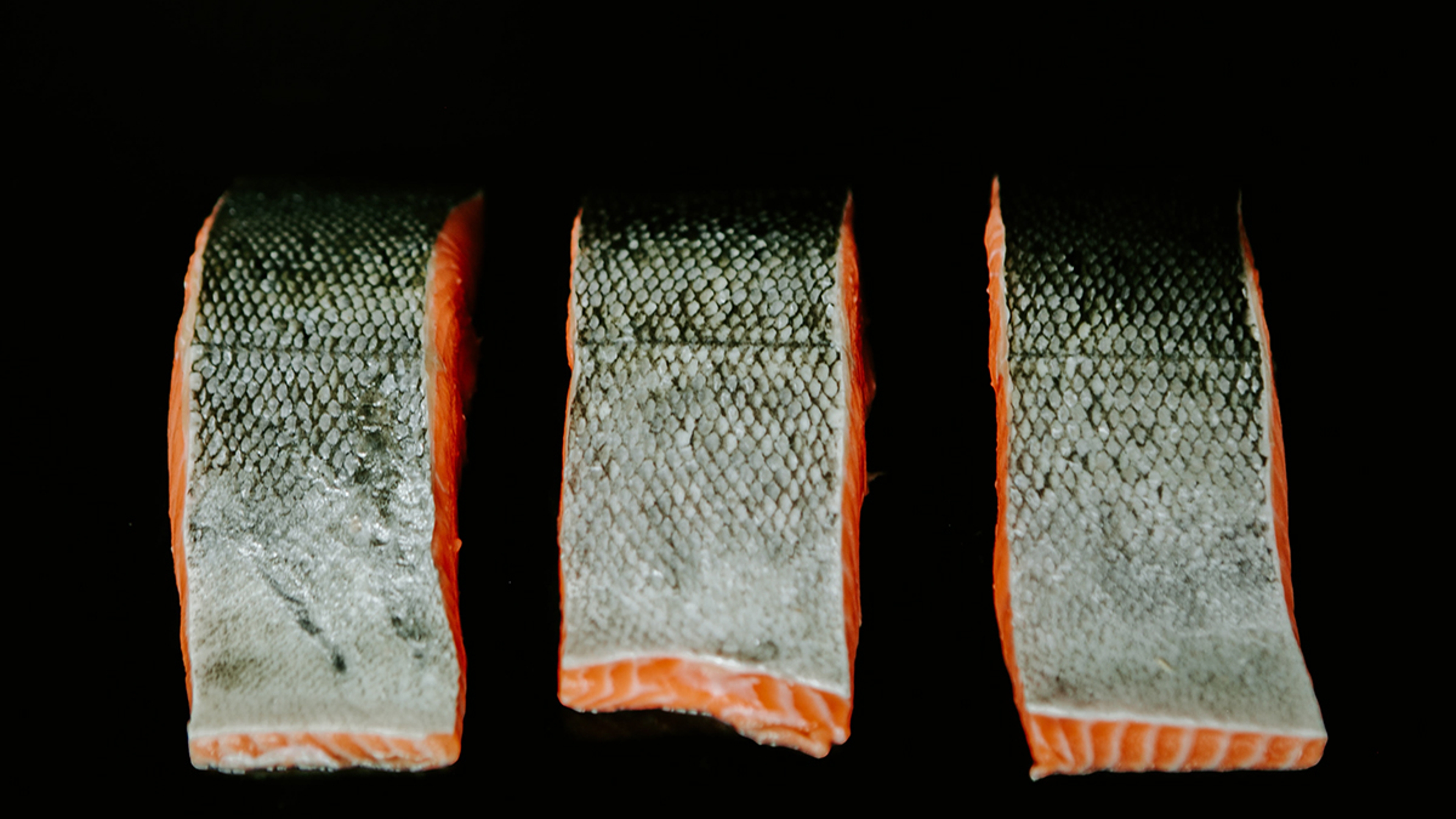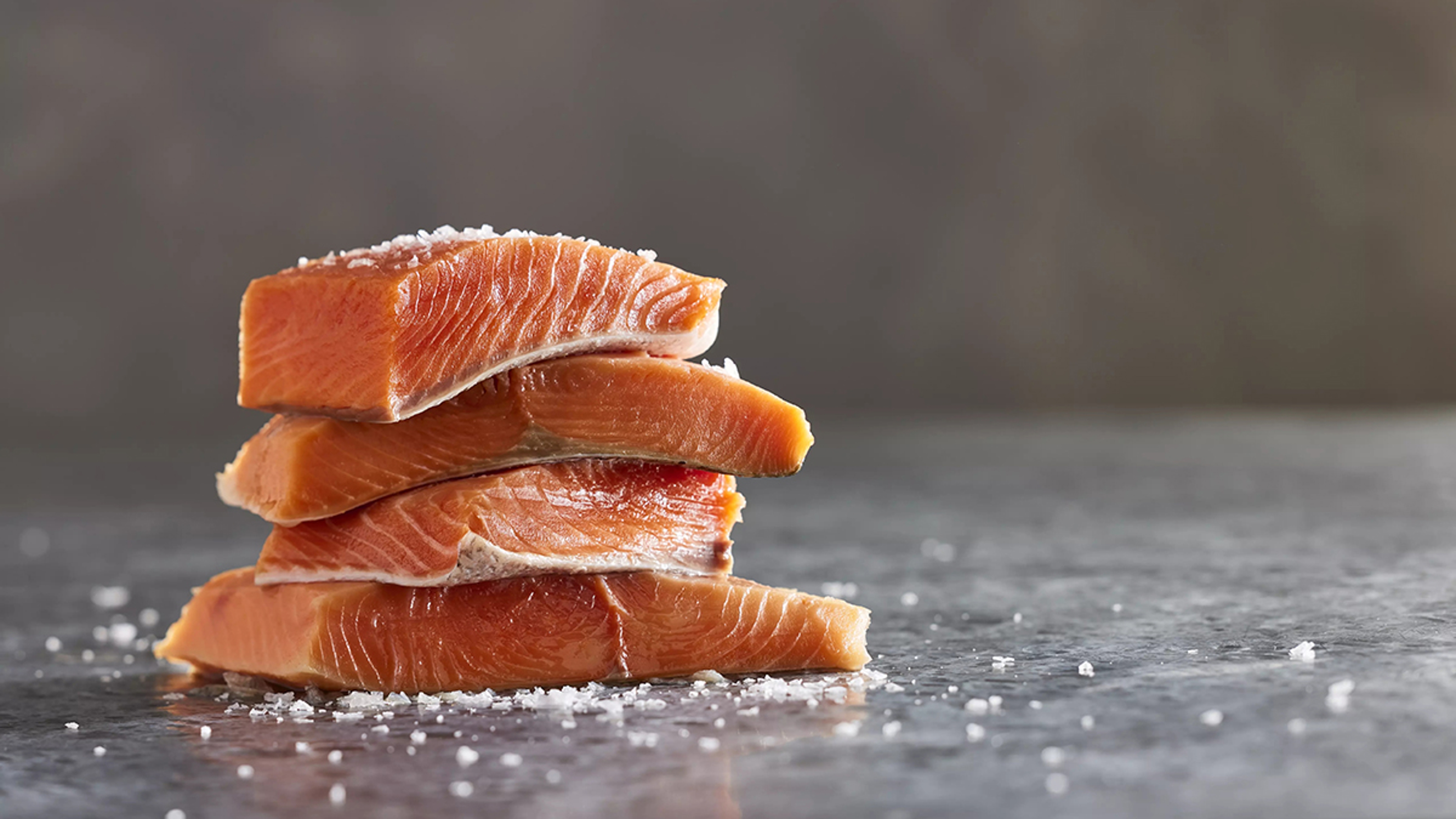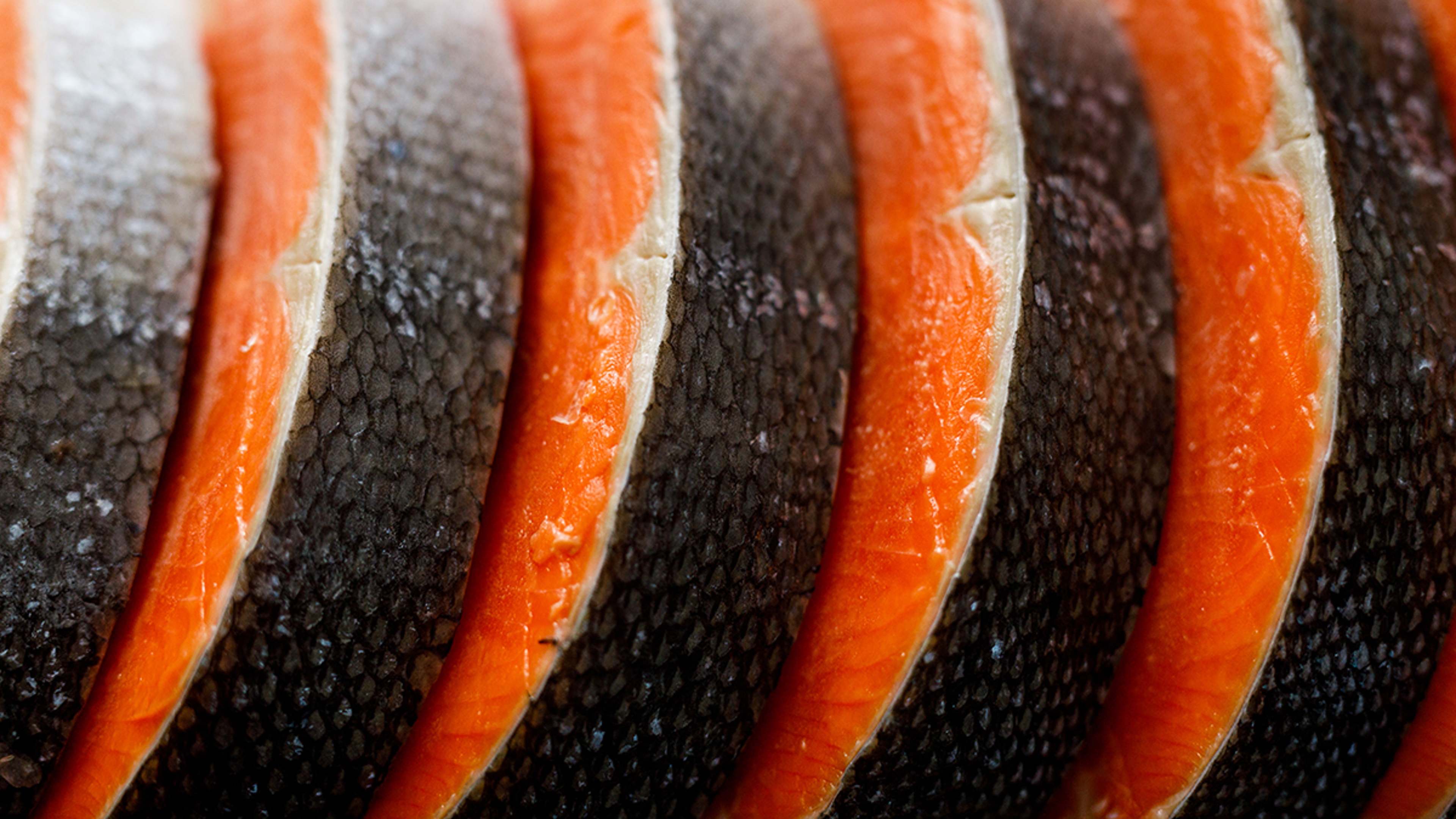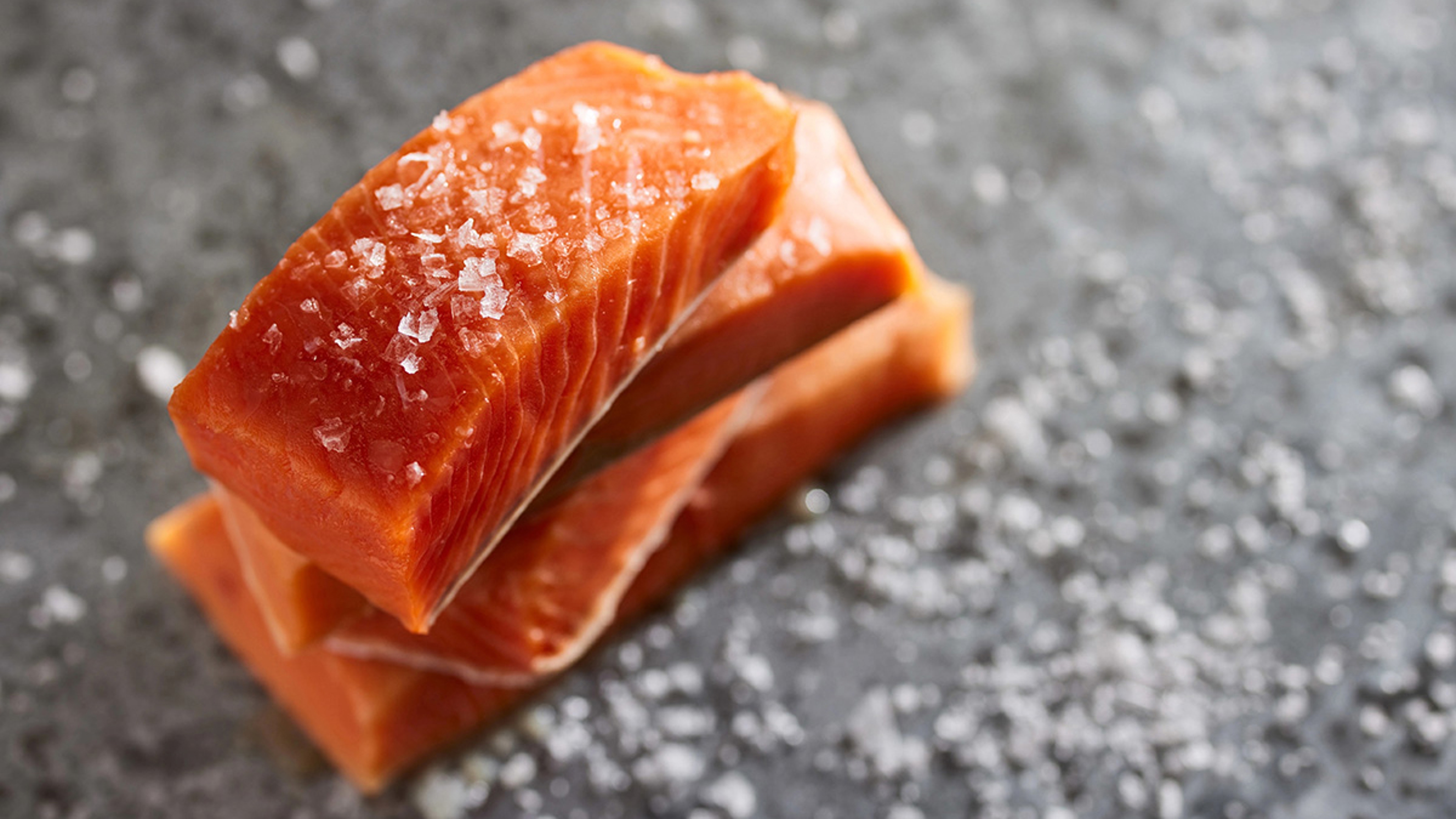Salmon has a lot to brag about.
The versatile VIP of the ocean buffet is loaded with essential nutrients and vitamins B and D, which play key roles in energy production, immune function, and bone health. It also brings a hefty dose of omega-3 fatty acids to the table.
But there’s more, a lot more, says Tracee Yablon Brenner, RDN, from Holy Name Medical Center in Teaneck, New Jersey. There’s an antioxidant called astaxanthin, which gives salmon its color and, Yablon Brenner says, “works with the omega-3 fatty acids to decrease free radical damage and may help with healing inflammatory skin diseases, such as psoriasis and atopic dermatitis.”
Brenner also emphasizes salmon’s high levels of protein. A six-ounce salmon fillet contains 34 grams of protein. No wonder the U.S. Food and Drug Administration (FDA) recommends eating this fish two to three times per week.
But what about the skin? Can you eat it?
The short answer: Absolutely.
The bigger question: Should you eat it? And, if so, what’s the best way to enjoy it?

The benefits of salmon skin
Salmon skin contains all the same great nutrients as the flesh but with a bonus: the highest concentration of omega-3 fatty acids of any part of the fish. The extra dose of fatty acids helps the body "burn" fats for energy primarily through their active compounds, eicosapentaenoic acid (EPA) and docosahexaenoic acid (DHA) rather than storing them as triglycerides (the fat found in your blood). This benefits heart health, and reduces inflammation — a factor linked to many diseases, including cancer. And, according to one study, the biologically active compounds found in salmon skin may even help treat type 2 diabetes.
Regardless of whether you end up eating the skin, cooking the fillets with the skin on will help retain the fish’s natural oils and nutrients, preventing them from being lost during preparation.
The safety of salmon skin
Salmon skin can be a nutritious addition to your diet, but there are a few things to keep in mind.
Toxins and pollutants
In some cases, salmon — particularly those raised in polluted environments — can carry contaminants like mercury, polychlorinated biphenyls (PCBs), and dioxins. These substances tend to accumulate in the fattier areas of the fish, including the skin.
Farmed salmon carry a higher risk of contamination than wild caught varieties. Atlantic salmon are most affected by pollutants, while wild caught salmon from the Pacific are considered the safest option.
Yablon Brennar adds: "To reduce risks of pollutants such as mercury and PCBs, which could form in the skin and fatty issues, it is important to buy sustainably sourced and wild salmon. The Seafood Watch is a good source that rates the sustainability and quality of fish, including salmon."
Pregnant or breastfeeding women might also prefer to steer clear of salmon skin, just to be extra cautious. However, for most people, the nutritional advantages of eating salmon skin outweigh the risks, provided the fish comes from clean, unpolluted waters. Wild caught Pacific salmon offers the best choice if you’re looking for a safer, healthier option.

Fat content
While salmon skin is rich in beneficial omega-3s, it is high in calories. If you’re monitoring your caloric intake or managing certain health conditions, enjoy salmon skin in moderation.
The flavor of the skin
Salmon skin has a slightly oily texture because of the natural fats it contains, but it can also carry a pleasant smokiness or char depending on the cooking method (such as pan searing). If the salmon skin isn’t cooked correctly, it can feel rubbery or taste overly fishy; also, overcooking can cause it to lose some of its nutritional value, especially omega-3s.
How to cook salmon skin
Salmon skin can add a delicious crunch to any baked, seared, or pan-fried fillet. But you should aim to cook it under moderate heat conditions. Omega-3s are polyunsaturated fats, meaning their chemical bonds are prone to oxidation and degradation when exposed to high temperatures, oxygen, and prolonged heat. As long as these effects are considered when cooking, its nutrients remain largely intact.
One of my favorite (and simplest) ways to cook salmon is to pan sear it. Before cooking, remove as much of the moisture from the skin as possible. Pat your salmon dry with a paper towel and bring it to room temperature. In a very hot pan, heat oil (one that’s good for high heat, such as avocado oil), but be careful your oil doesn’t get so hot that it smokes. Place the salmon in the pan, reduce the heat to medium, and leave it until the fat has rendered out of the skin, making it nice and crispy. Transfer to a plate, skin side up to retain its crispiness. Enjoy!
Salmon skin can also be cooked on its own, apart from the flesh, to make tasty recipes you might never have tried (or heard of!). This recipe for chicharrones has a similar texture to bacon but without many of the health concerns associated with that high-sodium pork product.
And speaking of bacon, use salmon skin as a substitute for the crunch to a BLT or to add some crunch to a tuna fish sandwich.
What if I still don’t want to eat it?
If the skin isn’t your thing, don’t worry. You can easily remove it at home by carefully pouring boiling water onto the salmon skin, loosening it a little. Repeat with more hot water if necessary, and you’ll easily be able to remove it all.
Too complicated? You can also use a chef’s knife to slice under the start of the skin and tug it off while wiggling the fish. But don’t remove the fatty layer under the skin or you’ll lose more of all those great nutrients.









